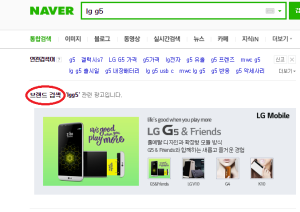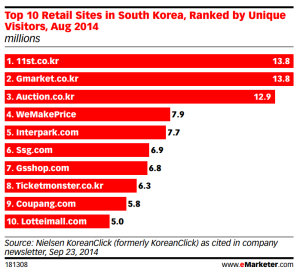What are Naver Webtoons and their history?
‘Webtoons’ are a form of digital comics that have grown in popularity since the 2010’s. The ‘Webtoon’ site and app started off in South Korea as part of the platform ‘Naver’s’ subsidiaries. Originally the most common form of comic media within South Korea was ‘Manhwas’- which peaked in popularity during the 1990’s. However, with the digitalization of many industries, it became an obvious choice to move comic content online for widespread accessibility and to decrease print production for the environment.
Within the framework for online comics, Naver’s Webtoon’s typically feature a few common features. Most Webtoons are uploaded on an episodic basis, with each chapter being published into one long, vertical comic strip. This idea of making use of an infinite canvas rather than flipping through digital pages makes the content easier to read on a smartphone or computer, with the art style of Webtoons maintaining its similarity to its Korean and Japanese predecessors in manhwas, anime and manga. According to David Welsh of Bloomberg media, it has been noted that previously the sales of comics in South Korea accounted for a quarter of all domestic book sales. These days Naver’s Webtoons now has nearly 10,000 published webtoons and according to a report conducted by Statisa in 2022, Naver’s Webtoons had over 85.6 million registered users worldwide.
How are Webtoons made?
The artwork of Webtoons and their format is digitally drawn through a variety of digital art platforms which are then adapted into vertical comic strips, resulting in an online comic episode that is optimized to be scrolled through on a smart phone. The benefit of this is that it is both more accessible and portable for Webtoon authors to create, resulting in the amount of material published in digital form now reaching an equal amount as that being published through print. As the content is online, it also gives way to more creator’s work being published as opposed to the long process of getting work physically printed in shops. Since its inception, Webtoon’s key selling point to a lot of creators was that it can be created by anyone with the skills to create them, which has led to an increase of new creators publishing their stories.
Creators of Webtoons can enjoy a variety of perks from creating their content via Naver’s Webtoons as opposed to pursuing traditional media. For example, Webtoons have less restrictions on the types of content and stories that can be uploaded, showing that there has been an increase in content produced for genres like romance, fantasy, thriller, horror and teen comedy. Another benefit of this concept is that online comics are usually episodic and uploaded to the internet on a weekly or monthly basis, with some of these comics being able to run for years and as a result, can accumulate lots of interest directly from readers to creators.
The mainstream rise and 5 best Webtoons
The domestic rise in Webtoon’s popularity has not gone unnoticed by the mainstream media in South Korea, as many popular digital comic titles have since been adapted into acclaimed dramas and movies. This concept model works well for all industries involved as Webtoons are created independently, they can garner a niche, yet dedicated following which guarantees success when being adapted for mainstream content. In the case of many adaptations, fans of the original Webtoons can speculate and have their input on how they would like the story to be adapted, such as the actors and themes used, giving producers the framework for commercial hits.
The most popular Webtoon adapted dramas internationally that followed this framework were:
1. Itaewon Class
Itaewon Class is a Korean drama that aired on JTBC and Netflix during 2020. The slice of life drama is based on the Webtoon of the same name and focuses on the lives of the characters working at the Danbam (단밤) bar in Itaewon- one of the most multicultural districts in Seoul. The creator of the Itaewon Class Webtoon (User name ‘Gwangjin’) is also the owner of the real restaurant Ggeulbam (꿀밤) in Itaewon, showing how Webtoon’s best stories can be created by anyone with a great story to tell. The comic based on the bar owners’ own experiences has since become the 12th highest rated Korean drama on Netflix.
2. Cheese in the trap
Cheese in the trap is based on the Webtoon of the same name and was incredibly popular when it aired with tvN in 2016. The original Webtoon series began in 2010 and had a large following before the drama adaptation was announced- resulting in the drama being popular with viewers from the airing of its first episode. The drama focuses on the life and romantic relationships of a group of university students in a uniquely fun and relatable way.
3. Lookism
Lookism is a Netflix drama adaptation of the Webtoon written by author Park Taejoon. The Netflix adaptation is unique as it maintains the original comic art style form the original and animates it for the big screen. Both the series and Webtoon are based on the author’s personal experiences dealing with the social issue of lookism while they were in high school. According to a Comic con interview Park Taejoon did in 2016, he said ‘My interest in illustrating rebound when I found Webtoon. This digital platform facilitates anyone to take part in and it has a wider medium to draw. Because of this, I decided to create this comic from my past experiences in school.’
4. All of us are dead
All of us are dead, is a Netflix drama based on Naver’s Webtoon ‘Our school right now’ (지금 우리 학교는). The premise of the drama is about a deadly virus that turns people into terrifying zombies. Students at a school near the virus’ outbreak realize they need to act fast to save themselves from transforming into flesh eating monsters. This Webtoon has accumulated a strong fanbase for being a great example of how a great horror story can translate into both digital and on-screen forms, without taking away from the overall mystery of this ongoing story.
5. True Beauty
True Beauty, Korean title ‘The descent of a goddess’ (여신강림) was written and illustrated by user ‘Yaongyi’ in 2018. The Webtoon exploded in global popularity since its first few chapters were uploaded and has since become one of Naver’s most read Webtoons with over 850 million views. The story revolves around the character ‘Jugyeong’, who uses her love of make-up to transform herself into being a girl who is no longer bullied for her looks at school. The story focuses on the romance and comedy in this coming-of-age story based on creator Yaongyi’s own personal experiences.
The global rise in Webtoons
-
Mainstream media adaptations
Platforms such as Netflix and Crunchyroll have been purveyors in the global expansion of Webtoon media. As these platforms are so accessible and are also optimized to be used on smart devices, they have assisted the rise in Webtoon adapted content globally. As a biproduct of this mainstream expansion of the original media, there has been an increase in fans now discovering the original Webtoon series and leading to more people helping to grow Webtoon’s into other media.
-
Western based marketing
The Korean company ‘Kakao’ also released its own comic platform in 2003. Originally called ‘Daum Webtoon’, it has since rebranded in August 2021 to be known simply as ‘Kakao Webtoon’. Although both Kakao and Naver offer their Webtoon services primarily for free, Kakao Webtoon has an emphasis on appealing to media markets in Thailand, Taiwan, China and Indonesia. Naver Webtoons however, expanded to be aimed at more of a western market as English was becoming the most popular secondary language for the majority of Naver’s content. Prior to 2014, most Naver’s Webtoons were only available in English through unofficial fan translations. However in July of 2014, one of Naver’s subsidiary companies ‘Line’ began the publication of official translations of popular Webtoons into multiple languages.
-
Attractive payment model for global Webtoon creators
Much like platforms such as YouTube and Tiktok, Webtoon creators can earn money from ads displayed on their series, leading to ‘becoming a Webtoon author’ a popular option for creative individuals world-wide. Like other online publications, there are a variety of payment models that can be used for Webtoons to benefit their authors. Some Webtoons offer a limited set of chapters for free and charge for the rest, while others allow only a certain number of chapters to be read per day without user payment. This concept of ‘work from anywhere, get paid simply’ is an attractive payment model to lots of creators around the world and is one that has seamlessly gained popularity since the lockdowns.
How could Webtoons impact and change industries in the future?
The market for Webtoons and their derivatives is currently valued at around ₩420 billion (US$368 million). This valuation is expected to grow as mainstream industries can be assured that popular Webtoon related content can be successfully adapted. As the popularity of Webtoons has grown, they have also been able to impact non media related industries too. As Webtoons are often set in real locations around South Korea, there has been an increase in both locals and tourists visiting the featured locations. For example, both the filming location and the original site of the pub centred in the Webtoon ‘Itaewon Class’ has become a key location for both tourists and local fans of the Webtoon to visit, bringing financial interest into the Itaewon area and its physical businesses. In the future, it is expected that this rate of Webtoon interest from both mainstream media and Webtoon readers will continue to grow globally and will have a positive impact on more industries as it does.
Through this blog post, we have explored the journey of the Webtoon phenomenon since its creation. We hope that from the information provided in this article that you have a greater understanding of Webtoons and their impact on mainstream media.










8 Responses
This post offers a fantastic insight into the burgeoning influence of Naver Webtoons! I’ve recently started diving into some of the recommended titles, and I’m blown away by the storytelling and artistry. It’s amazing to see how Korean webtoons are capturing global audiences. I can’t wait to see how this trend continues to evolve!
I loved reading about the global impact of Naver Webtoons! It’s fascinating to see how Korean webtoons are gaining popularity worldwide. The recommendations are great; I’ve added a few to my reading list. Can’t wait to dive into these stories!
This post perfectly captures the incredible growth of Naver Webtoons! I love how you highlighted the top recommendations. I’ve been wanting to dive into some new series, and “Lore Olympus” and “True Beauty” have been on my radar for a while. Can’t wait to see how these webtoons continue to impact the global market! Thanks for sharing!
I loved this post! Naver Webtoons have truly transformed the way we consume comics, and it’s exciting to see their global impact. The recommendations you provided are spot on; I can’t wait to check out the ones I haven’t read yet. Thanks for sharing this insightful piece!
I loved this post! The rise of Naver Webtoons is truly remarkable, and it’s fascinating to see how they’re shaping the digital landscape globally. I can’t wait to check out the five recommendations you provided—they sound like must-reads! Thanks for sharing such insightful content!
I loved this post! It’s fascinating to see how Naver Webtoons is reshaping the digital landscape and bringing Korean storytelling to a global audience. The list of webtoons you highlighted is spot on; I’ve already added a few to my reading list. Can’t wait to see how this trend continues to evolve!
Absolutely loved this post! It’s fascinating to see how Naver Webtoons is shaping the global comic landscape. The five recommendations are spot on, especially the ones that blend unique storytelling with stunning art. Excited to explore more of these webtoons!